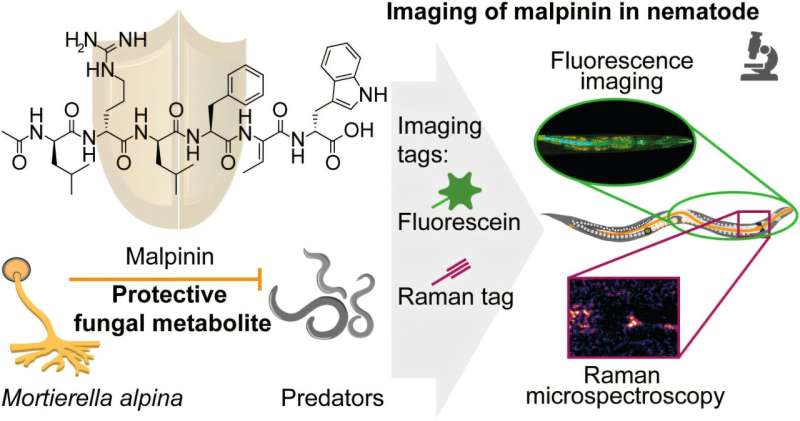By Friederike Gawlik

The soil fungus Mortierella alpina has the potential to make agriculture greener and more sustainable: The fungus produces bioactive molecules called malpinins, which could protect plants from destructive worms. A research team from Jena has now been able to understand and describe their mode of action for the first time. The study was published in the Journal of the American Chemical Society.
The story begins under our feet: Soils are not only a complex habitat, but also a battlefield where tiny nematodes fight against fungi and plant roots. Agriculture in particular suffers as a result. Out of concern about crop losses, the worms are conventionally controlled with chemical pesticides. However, these are increasingly being criticized for potentially damaging the soil and water. With a view to the future, alternatives must be found for sustainable agriculture.
Unlike us humans, the soil fungus Mortierella alpina has long known a natural trick against nematodes: It produces special molecules that make life difficult for its predators. These surface-active natural products are called malpinins and act as natural detergents.
"Earlier studies had already shown that the fungus can fight nematodes, but the molecular mechanism of action behind this was still unknown. We wanted to elucidate this," says first author Dr. Hannah Büttner from the Leibniz Institute for Natural Product Research and Infection Biology—Hans Knöll Institute (Leibniz-HKI).
Mortierella alpina, which is mainly found in the soil of temperate and cool regions, could be a key to sustainable agriculture. "If we find out exactly how Mortierella works against nematodes, we could perhaps use this fungus specifically as a biological control agent against plant pathogens," says Büttner, who has just successfully completed her doctoral thesis.
For the study, the scientists investigated the effect of malpinins on model nematodes. In order to track the natural products live in the nematodes, they used imaging techniques such as fluorescence microscopy and Raman spectroscopy in cooperation with Constanze Schultz from the neighboring Leibniz Institute of Photonic Technology.
"We were able to observe how the malpinins accumulate specifically in the worms' digestive tract," explains Büttner. "However, the nematodes did not die immediately, but stopped feeding. This ultimately led to a slow but effective control of the worms."
The chemical structure of malpinins is particularly remarkable and makes their worm-killing effect possible in the first place. A special building block is crucial here—the unusual amino acid dehydrobutyrin.
"Dehydrobutyrin has a reactive double bond and could therefore react with molecules that are essential for the function of the nematode intestine," explains co-author Johannes Raßbach from the Institute of Pharmacy at Friedrich Schiller University in Jena. These reactions could, for example, disrupt important enzymatic processes in the digestive tract of the pests or impair the membrane structure.
Experiments showed that variants of malpinins in which the amino acid was replaced by a less reactive structure completely lost their effect. "This indicates that precisely this structure is essential for biological activity. Without it, the compound is ineffective," says Raßbach.
Click here to see more...